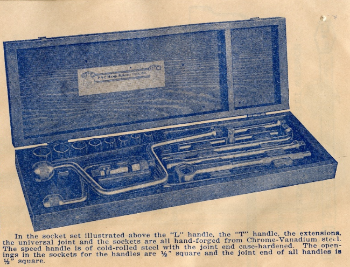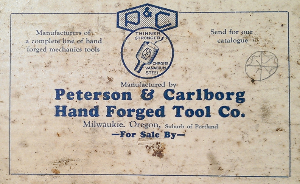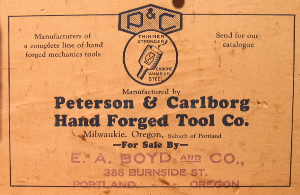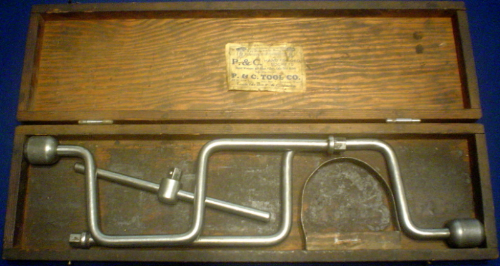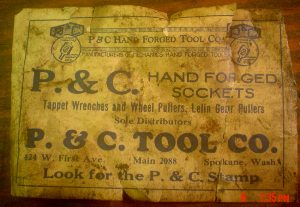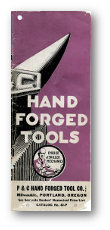 This week we have a special treat for you! A No. 40P catalog dating from 1939. Also new to the website, in addition to the catalog, is the price list for the No. 40 and 40P catalogs, effective June 1, 1939.
This week we have a special treat for you! A No. 40P catalog dating from 1939. Also new to the website, in addition to the catalog, is the price list for the No. 40 and 40P catalogs, effective June 1, 1939.
We owe a big thanks to Reed Armour for graciously allowing his copies to be shared with everyone and to Greg Kareofelas for doing all the scanning.
This No. 40P is special for a number of reasons:
First it represents the state of art of P&C under John & Jessie Peterson. Only a few more years pass before the transition to Plomb ownership.
Secondly, 40P illustrates a number of previously unseen displays, (at least unseen in our collection of catalogs at pnctools.com). The displays illustrated in the catalog range from the immense (3′ x 12’….yes, twelve feet long!) to small table top displays for holding a few wrenches at the check-out counter.
Thirdly, this catalog illustrates some tools previously unseen in our collection of catalogs. Most obvious of these for me was the “E” series of round handled box wrenches. 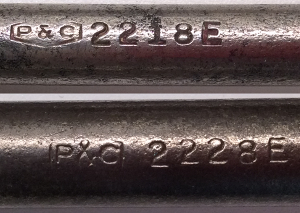 My personal collection contains a number of these “E” wrenches and here is a photo of a couple. The appearance of the wrenches and logos had me dating them from the 30’s & 40’s, so I was pleased to finally find them in the 40P catalog.
My personal collection contains a number of these “E” wrenches and here is a photo of a couple. The appearance of the wrenches and logos had me dating them from the 30’s & 40’s, so I was pleased to finally find them in the 40P catalog.
The question for me has always been…what does the “E” stand for? I liked the “E” series. They seem slightly slimmer. The 40P catalog answers the question on page 3 and the bottom of page 16. “E” stands for “Economy”. I guess I’ve been a sucker for the “cheap” wrenches…although P&C goes to great lengths to avoid using that word regarding their wrenches! They use it for the competition, as seen in this quote from page 16. “Real ‘economy’ box wrenches available in 6 popular wrenches (12 different openings). P&C standard design, alloy steel, hand forged, quality, in dull plated finish and polished ends. Exceptional value and competitive in price with cheaper wrenches….”
Page 17 lists another unusual round handled box wrench. The “H” series; “Heavy Duty”, “from select alloy steel and designed to withstand hard industrial service.” I have never seen a “H” series wrench or one advertised on ebay or anywhere else. Have you?
Another wrench I found in this catalog was the number 1205 obstruction wrench I recently picked up. Seen in this catalog for the first time, the wrench is described as a “No. 1205 12 Pt. Chev. Manifold and Starter Wrench.” Now if I just had a 1938 or 39 Chevy I could loosen the manifold and starter nuts.
I also have a P&C 2006, a valve tool previously unidentified by me. Page 20 in the 40P lists it “For ’37 and older Ford motors”.
Finally, a subtle addition to the catalog I’m not sure how I even picked up. This is the first catalog (among our collection), where the weights of the tools are listed in the product descriptions. Dang! I’ve got to be too obsessed with these catalogs to notice something like that! 🙂
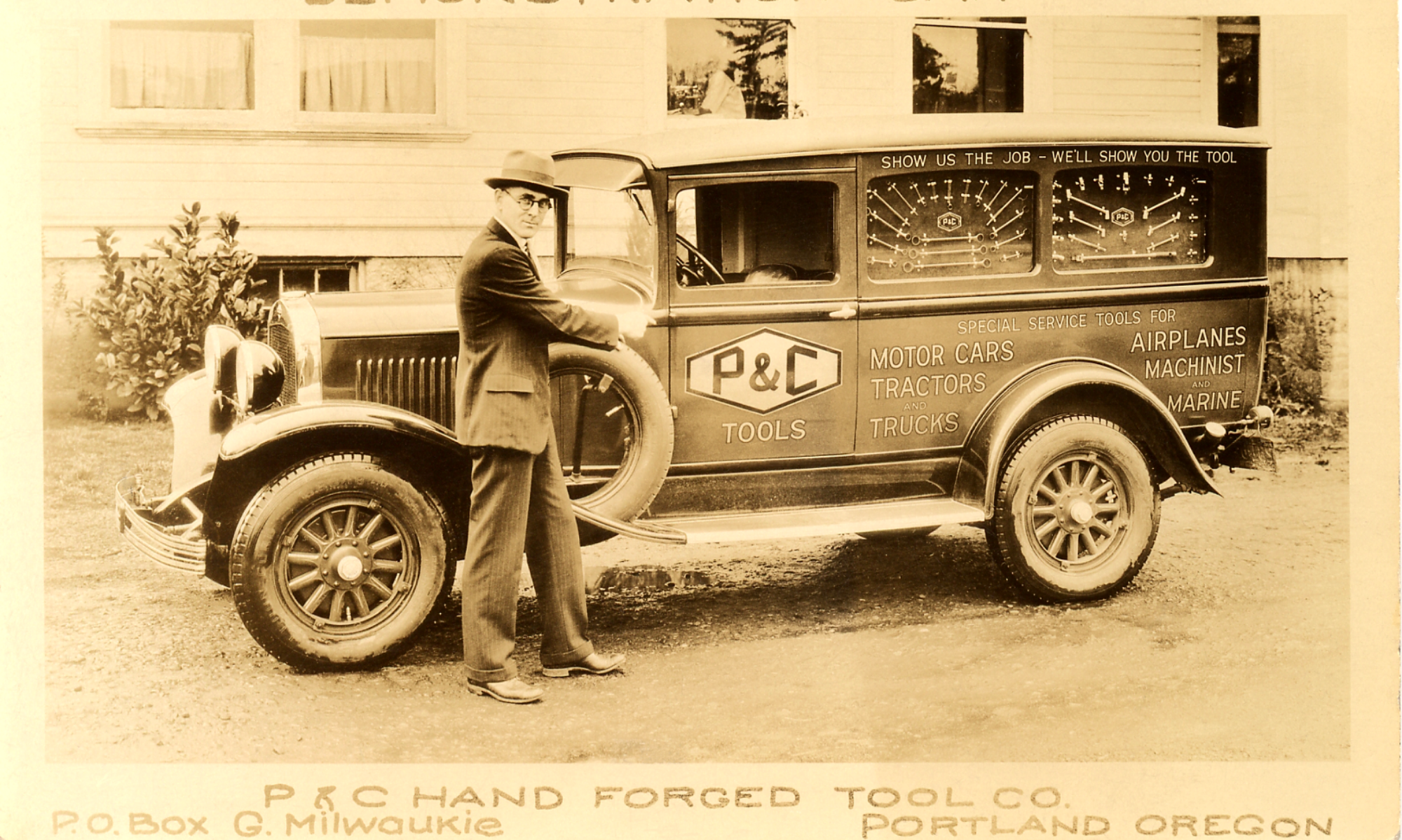
 My personal collection contains a number of these “E” wrenches and here is a photo of a couple. The appearance of the wrenches and logos had me dating them from the 30’s & 40’s, so I was pleased to finally find them in the 40P catalog.
My personal collection contains a number of these “E” wrenches and here is a photo of a couple. The appearance of the wrenches and logos had me dating them from the 30’s & 40’s, so I was pleased to finally find them in the 40P catalog.